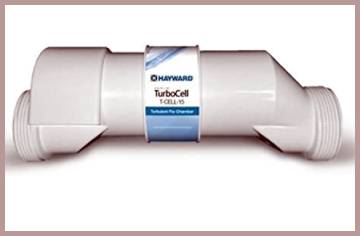In the world of saltwater pool systems, the Generic T-Cell-15 Replacement has been a game-changer for pool owners looking to maintain sparkling clean water without breaking the bank.
This article will dive into the ins and outs of this affordable alternative to branded T-Cell-15 salt cells, discussing the pros and cons and addressing frequently asked questions.
The Rise of the Generic T-Cell-15 Replacement
Once upon a time, the T-Cell-15 was the go-to salt cell for many pool owners. However, with the rising costs of branded products, many began searching for more budget-friendly alternatives. Enter the generic T-Cell-15 replacement.
These aftermarket salt cells have made a splash in the pool maintenance world, offering similar functionality at a fraction of the price. But are they worth it? Let’s find out.
Pros of Generic T-Cell-15 Replacement

Affordability
One of the most significant advantages of generic T-Cell-15 replacements is their affordability. In comparison to the branded salt cells, these generic alternatives can save pool owners a substantial amount of money.
As a result, many have embraced these cost-effective solutions to maintain their pools without breaking the bank.
Compatibility
Another benefit of generic T-Cell-15 replacements is their compatibility with a wide range of salt chlorination systems. Many of these aftermarket salt cells are designed to work seamlessly with popular brands like Hayward, ensuring that you can maintain the same level of water quality without paying a premium for the branded product.
Performance
Generic T-Cell-15 replacements have proven to be just as effective as their branded counterparts in generating chlorine from salt. Users have reported that these aftermarket salt cells work efficiently and effectively, providing clean and sanitized pool water.
Extended Warranty Options
Many generic T-Cell-15 replacements come with extended warranty options, giving pool owners peace of mind knowing that their investment is protected.
This can be a significant advantage over branded products that may only offer limited warranty periods.
Cons of Generic T-Cell-15 Replacement

Potential Quality Concerns
One potential drawback of generic T-Cell-15 replacements is the varying quality of the products available. While some aftermarket salt cells are well-made and perform as expected, others may not be up to par.
It’s crucial to do your research and read reviews before purchasing a generic T-Cell-15 replacement to ensure you’re getting a reliable product.
Lack of Brand Support
Another disadvantage of generic T-Cell-15 replacements is the lack of direct brand support. While branded products typically come with customer service and technical support, generic alternatives may not offer the same level of assistance.
This could be a concern if you encounter issues or need help troubleshooting.
Possible Inconsistency in Performance
Though many users report satisfactory performance from their generic T-Cell-15 replacements, there’s always the possibility of inconsistency in how well the cells function.
Factors such as manufacturing quality and individual product variations can impact performance, making it essential to choose a reputable manufacturer.
FAQ
A T15 salt cell typically lasts between three and five years, depending on factors such as usage, water balance, and proper maintenance. Regularly inspecting and cleaning the cell can help extend its lifespan.
Aftermarket salt cells, like the generic T-Cell-15 replacements, can be worth it for pool owners seeking a more budget-friendly option. They offer similar performance and compatibility at a lower price point.
However, it’s crucial to choose a reliable product from a reputable manufacturer to ensure quality.
The Hayward W3T-CELL-15 is a newer, improved version of the original Hayward T-Cell-15. The W3T-CELL-15 features an upgraded design and improved durability, but both cells serve the same purpose of converting salt into chlorine for saltwater pool systems. The primary difference lies in the improved performance and longevity of the W3T-CELL-15.
Salt cells are worth it for many pool owners who appreciate the convenience and ease of maintaining a saltwater pool. They provide efficient and consistent chlorination, eliminating the need to handle and store traditional chlorine products. Additionally, saltwater pools are often considered more comfortable for swimmers due to reduced chemical exposure.
Yes, high salt levels can damage a salt cell. Excess salt can cause scaling on the cell plates, reducing its efficiency and shortening its lifespan. It’s essential to maintain the appropriate salt level in your pool (typically between 2,700 and 3,400 ppm) and clean the salt cell regularly to prevent damage.
In general, a larger salt cell can last longer because it has more surface area for producing chlorine. This means it can operate at a lower output setting, reducing wear and tear on the cell. However, it’s important to choose a salt cell that’s appropriately sized for your pool to ensure optimal performance and longevity.



